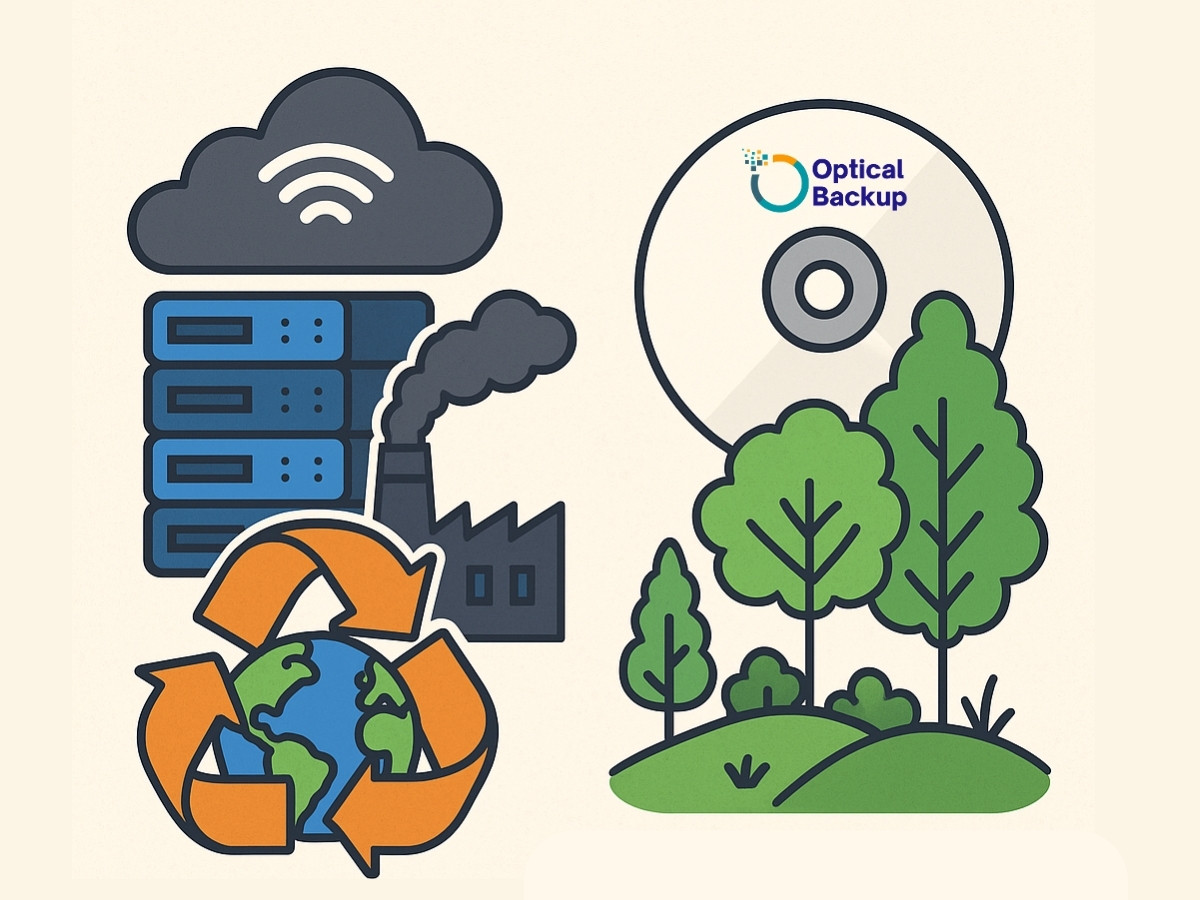The Hidden Carbon Footprint of Cloud Storage and the Green Alternative of Physical Archiving
It is no secret that cloud storage has become a mainstay in many businesses. It offers convenience, scalability, and improved collaboration. However, there’s a hidden cost to this convenience that’s often overlooked – its carbon footprint. According to a report by Greenpeace, data centers that power cloud storage are among the most energy-intensive facilities on earth, consuming 3% of the world’s electricity and accounting for about 2% of total greenhouse gas emissions, which is roughly the same carbon footprint as the airline industry.
So, what is the alternative? The answer lies in physical archiving, specifically OpticalBackup. Choosing OpticalBackup for your storage needs not only provides you with a secure and efficient solution, but also significantly reduces your carbon footprint.
Understanding the Carbon Footprint of Cloud Storage
Before we delve into the advantages of physical archiving, it’s crucial to understand the environmental impact of cloud storage. Many of us utilize cloud storage daily, uploading files, streaming videos, and running applications. But behind this seamless convenience lies a network of data centers consuming a staggering amount of energy.
Data centers are essentially vast warehouses filled with servers that store and process data. These facilities require enormous amounts of electricity, not just to run the servers, but also to cool them, as they generate a significant amount of heat. In fact, data centers globally use more than 416 terawatts (4.16 x 1014 watts) of electricity annually, nearly 3% of the world’s total electricity supply, as per a report by Nature.
The Impact of Physical Archiving
Now that we understand the carbon cost of cloud storage, let’s explore the eco-friendly alternative – physical archiving. Physical archiving involves storing your data on a physical device such as optical discs, which requires significantly less energy than maintaining an always-on data center.
OpticalBackup uses high-quality optical discs that store data physically. This offline backup method is not only energy-efficient but also provides long-term backup solutions. Once data is written onto these discs, no further energy is required to maintain the data, drastically reducing the energy footprint compared to cloud storage.
The Environmental Benefits of Physical Archiving
Choosing OpticalBackup for your archival needs has several environmental benefits:
1. Reduced Energy Consumption: Optical discs require no energy to maintain once the data is written, drastically reducing your energy consumption and carbon footprint.
2. Long-Term Durability: High-quality optical discs can last for decades, if not centuries, reducing the need for frequent replacements and the resulting waste.
3. Decreased Dependence on Data Centers: Since your data is stored physically, there’s no need for energy-intensive data centers, further reducing your environmental impact.
Conclusion: OpticalBackup – A Sustainable Solution
The world is becoming increasingly digital, and the demand for data storage solutions is growing exponentially. While cloud storage offers undeniable convenience, its carbon footprint is a significant concern that can’t be overlooked.
By choosing OpticalBackup for your data storage needs, you’re not only ensuring secure, long-term backup but also doing your bit to protect the environment. It’s time to rethink our data storage strategies and move towards more sustainable practices.
Try OpticalBackup today and take a step towards a greener future.
Sources:
[Greenpeace Report](https://www.greenpeace.org/usa/reports/click-clean-2020/)
[Nature Report](https://www.nature.com/articles/d41586-018-06610-y)
[OpticalBackup Blog](https://opticalbackup.com/blog/)


